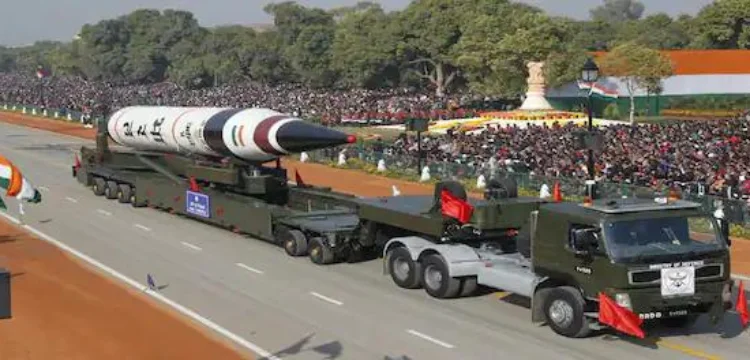According to the Stockholm International Peace Research Institute (SIPRI), India now possesses a slightly larger nuclear warhead inventory than Pakistan, marking the first time since both nations conducted nuclear tests in 1998. SIPRI’s report, released during Eid holidays, underscores global concerns over escalating nuclear dependencies amidst heightened geopolitical tensions. Previously, assessments by SIPRI and the International Panel on Fissile Materials (IPFM) typically indicated Pakistan holding a slight edge in nuclear arsenal size, ranging from five to ten warheads.
However, the latest 2023 evaluations reveal India’s marginal lead. SIPRI bases its assessments on satellite imagery of uranium enrichment and plutonium production facilities, though the methodologies remain undisclosed, raising concerns about the precision of these estimates. Both countries maintain significant opacity regarding their nuclear programs, complicating verification of reported figures.
India’s nuclear capability is supported by extensive air, ground, and sea-based delivery systems and substantial uranium reserves, augmented by a 2008 Nuclear Suppliers Group waiver allowing increased fuel imports for civilian use, conserving indigenous uranium for potential military applications. The report notes India’s shift towards pre-attaching some nuclear warheads to launchers during peacetime.
Read More: North Korea Tests Underwater Nuclear System In Response To US Drills
As of January 2024, SIPRI estimates Pakistan’s nuclear arsenal at approximately 170 warheads, distributed across its emerging nuclear triad. This includes aircraft, ground-launched ballistic and cruise missiles, and ongoing developments in delivery systems and fissile material accumulation, suggesting potential growth over the next decade. Pakistan maintains a doctrine that allows for pre-emptive nuclear strikes in response to perceived conventional force imbalances, especially concerning India’s ‘Cold Start’ doctrine.
India, with an estimated 172 nuclear weapons, continues to develop its nuclear triad comprising aircraft, land-based missiles, and nuclear-powered submarines, enhancing second-strike capabilities. Despite maintaining a no-first-use policy, India has adjusted its nuclear strategy to include responses to non-nuclear threats since 2003.
Globally, all nuclear-armed nations, including the US, Russia, China, and North Korea, are modernizing arsenals and deploying advanced weapon systems. The total global nuclear warhead count stands at approximately 12,121, with significant numbers maintained on high alert for potential deployment, highlighting ongoing efforts to enhance nuclear capabilities and readiness amidst evolving geopolitical landscapes.











